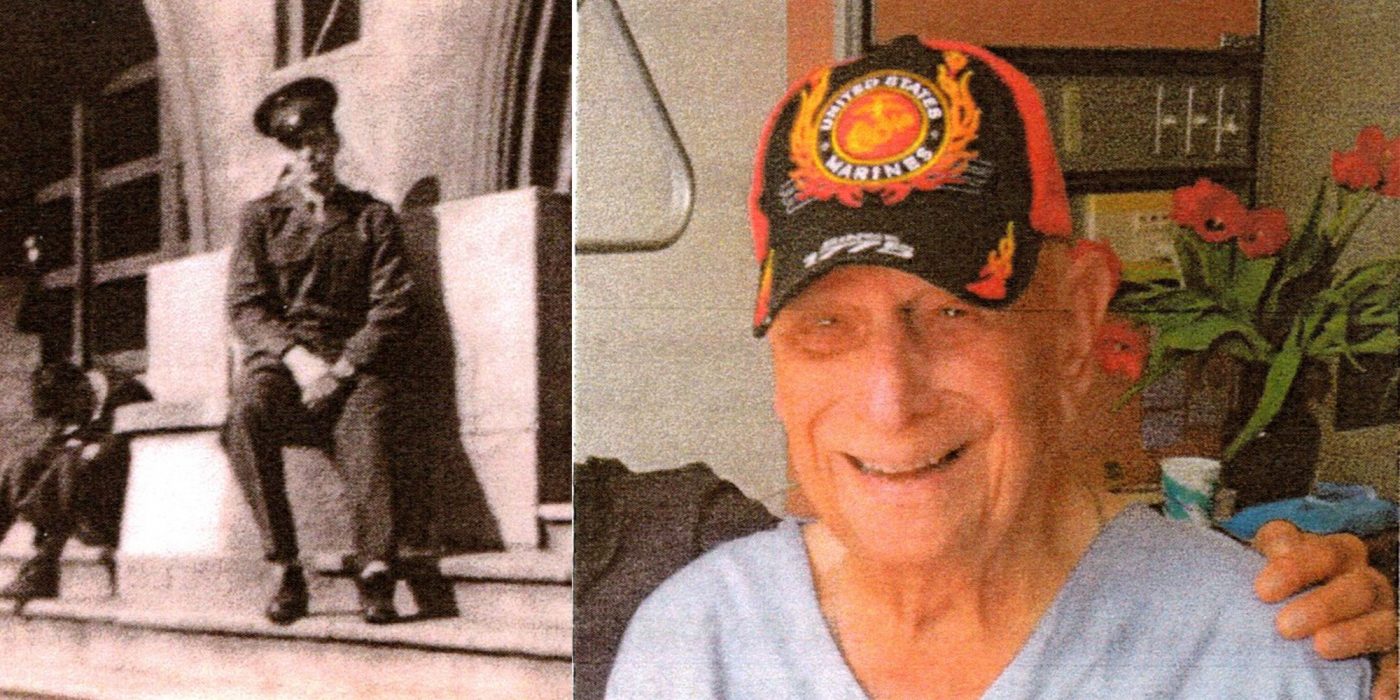
TOM WILSON
“Wounded in Two Wars”
A Veteran of World War II and the Korean War, Tom is a decorated Marine infantryman, wounded in both wars.
Tom volunteered for the Marine Corps in 1942 and stayed on active duty until discharged in 1957 with the rank of Gunnery Sergeant (E-7). Gunnery Sergeants are commonly referred to by the informal abbreviation of “Gunny”. This nickname is usually regarded as a title of esteem and camaraderie and is acceptable for use in all but formal ceremonial events.
He entered “boot camp” in 1942 at Paris Island, South Carolina. He then went on to Camp Pendleton, California where he joined the First Marine Division for advanced training and became a member of the Scout and Sniper team.
In 1944, he along with his combat unit, left the United States for Kwajalein Atoll, which is part of the Marshall Islands chain, located in the South Pacific. Kwajalein was a major staging area for the Marine battalions to refit and train prior to advancing against installations located in many of the South Pacific islands.
the initial invasion of the Japanese island of Okinawa on April 1, 1945. This was the largest amphibious assault in the Pacific Theater of World War II.
This 82-day battle lasted from April 1 until June 22, 1945.
The battle has been referred to as the “typhoon of steel”. The nickname refers to the ferocity of fighting, the intensity of the Japanese Kamikaze attacks, and the sheer number of Allied ships and armored vehicles that assaulted the island. The battle was one of the casualties on both sides; at least 52,000 Allied and 84,000 to 117,000 Japanese.
Tom was wounded in the early days of the battle by shrapnel (metal fragments) from Japanese mortar shells exploding all around him. He was transported by a hospital ship to Pearl Harbor and then later to San Diego for a long recovery.
After the war ended, Tom was assigned to stateside duty and was promoted to sergeant. His first assignment after recovering from his wounds was as a Brig Warden. (A Brig is a Marine Corps or Navy prison.)
Tom did not enjoy this new assignment because he felt that the Marine prisoners were not being properly treated for their mental and behavioral issues. Many of the prisoners were suffering from “battle fatigue”, defined as “a mental illness that is caused by the experience of fighting in a war, which causes extreme feelings of nervousness and depression”. Today, the commonly used term for the same mental condition is post-traumatic stress disorder (PTSD).
In 1950, as the United States entered the Korean War, Tom and a friend volunteered to join the Marine Corps battle units. Tom boarded the transport ship “General RN Mann”, out of San Diego, bound for Japan and onto staging areas in the Pacific, to prepare for the Inchon Korea Landing (Operation Chromate). These combined United Nations and South Korean forces were commanded by General of the Army, Douglas McArthur. The Inchon Landing was an amphibious invasion that resulted in a decisive victory and strategic reversal in favor of the United Nation’s forces. The operation involved 75,000 troops and 261 naval vessels and led to the recapture of the South Korean capital of Seoul two weeks later.
Tom was again assigned to the Marine Scout and Sniper team as the battle began on September 15, 1950. The battle would end on September 19th. He was wounded again by Korean mortar shrapnel and was evacuated to Pearl Harbor to recover from his wounds. He was getting “a little tired of this routine of being wounded by shrapnel” but he was very thankful to be returning alive from the heavy fighting.
In 1957, after being discharged from the Marine Corps, he was recruited to undertake an extensive apprenticeship after which he was assigned to work at Mare Island, California on government-classified projects. One of these special projects was called Deep Submergent

